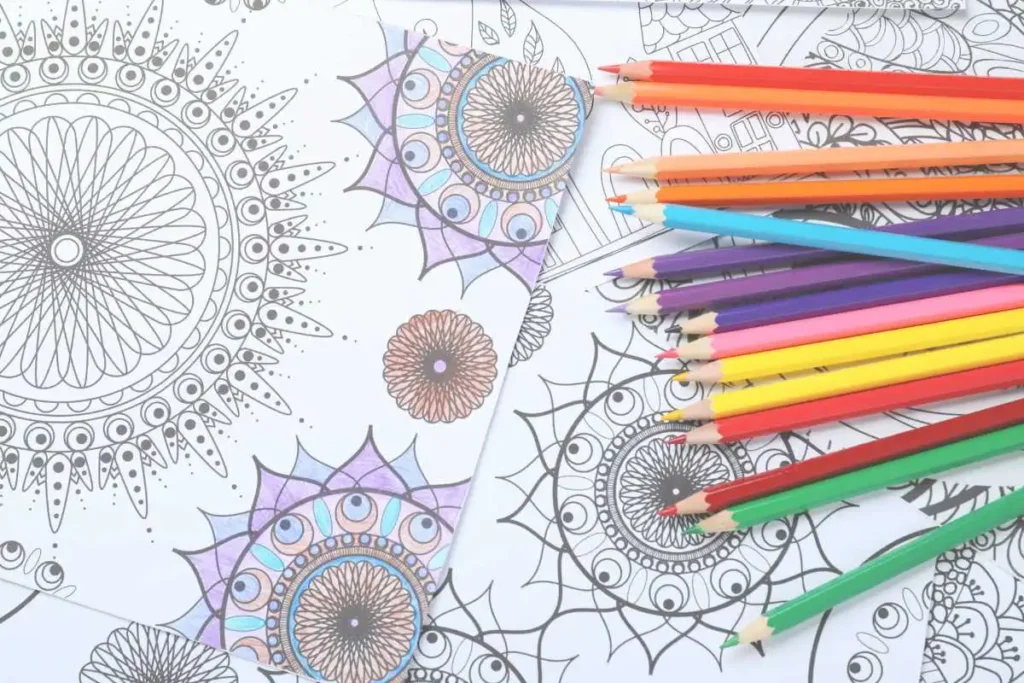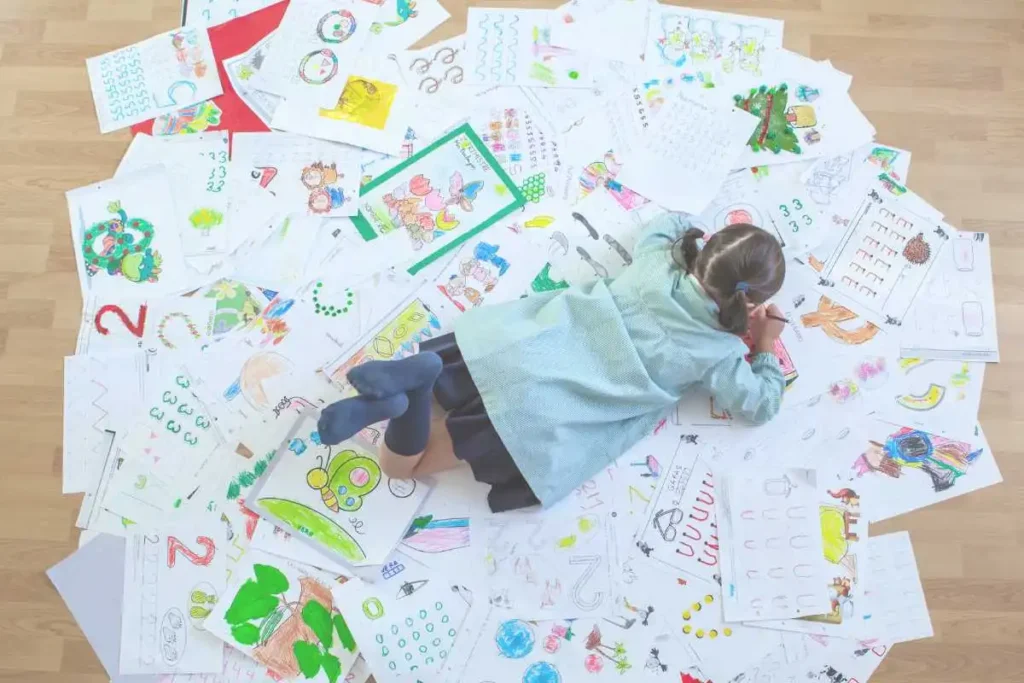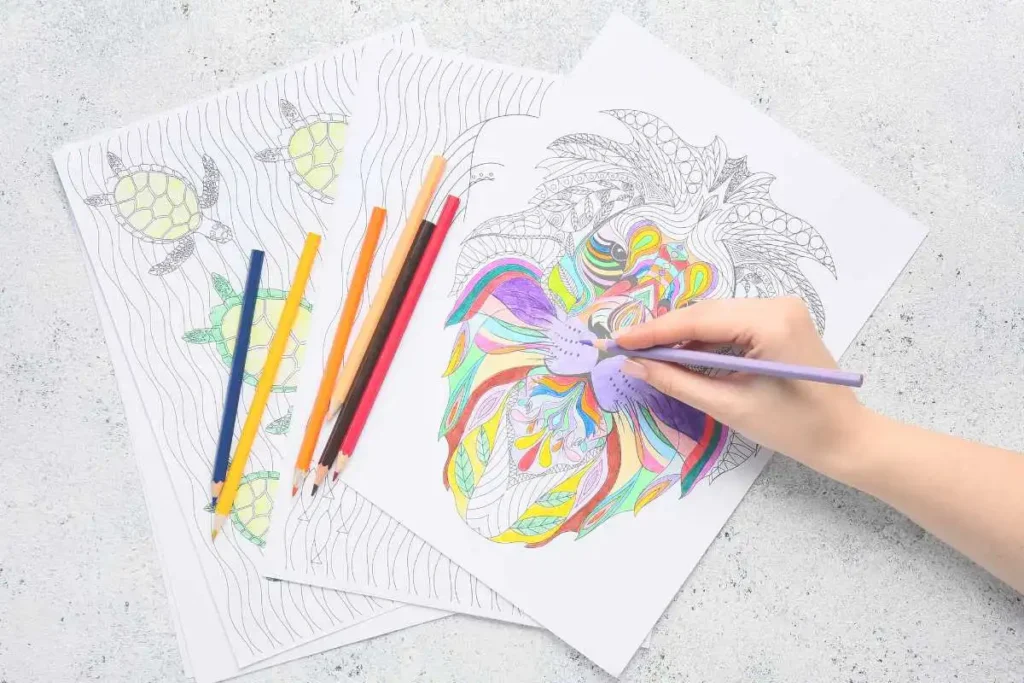
Hey there, new mamas! Are you looking for a fun, easy way to kickstart your little one’s literacy journey? Well, grab your crayons because we’re about to dive into the colorful world of free coloring pages! That’s right – those simple sheets of black and white drawings can be powerful tools for building early literacy skills. And the best part? You can find tons of coloring pages online! Let’s explore how to turn coloring time into learning time.
Table of Contents
Why Coloring Pages Are a New Mom’s Best Friend
Before we jump in, let’s talk about why free coloring pages are such a fantastic resource:
- They’re free! (Who doesn’t love that?)
- They’re readily available online
- They’re low-prep – just print and go
- They’re versatile and can be used for multiple learning activities
- Kids love them!
Coloring Pages and Early Literacy
You might be wondering, “How can coloring possibly help with reading and writing?” Well, mama, you’d be surprised! Free coloring pages can help develop several pre-literacy skills:
- Fine motor skills (essential for writing)
- Letter recognition
- Vocabulary development
- Storytelling abilities
- Print awareness
Now, let’s dive into how to use those free coloring pages to build these skills!
1. Letter Recognition with Free Coloring Pages
Letter recognition is a crucial first step in reading. Here’s how to use coloring pages to boost this skill:
- Alphabet Coloring Pages: Start with coloring pages featuring letters. Free Resource Alert! Check out these “Alphabet Coloring Pages” on TeachersPayTeachers. They’re completely free and perfect for little learners!
- Letter Hunt: Print out a busy scene coloring page and have your child circle all instances of a particular letter.
- Color by Letter: Find free coloring pages where each section is marked with a letter, and each letter corresponds to a color. Free Resource Alert! These “Color by Letter Worksheets” are a fun way to practice letter recognition.
2. Vocabulary Building with Coloring Pages

Coloring time can be prime time for expanding your little one’s vocabulary. Here’s how:
- Themed Coloring Pages: Choose free coloring pages with specific themes like animals, vehicles, or household items. Free Resource Alert! These “Transportation Coloring Pages” are great for learning vehicle names.
- Describe and Color: As your child colors, describe the picture using rich vocabulary. “Look at the enormous elephant with its long, swaying trunk!”
- Color and Label: For older kids, encourage them to label parts of the picture they’re coloring. Website Recommendation: ColoringHome offers a wide variety of free coloring pages on different themes, perfect for vocabulary building.
3. Storytelling with Coloring Pages
Coloring pages can be excellent prompts for storytelling, a crucial precursor to reading comprehension. Try these ideas:
- Sequence Coloring: Find a series of related free coloring pages and have your child tell a story as they color them in order.
- Create a Coloring Book: Let your child choose several free coloring pages to staple together into a book, then tell a story that connects them all.
- What Happens Next?: After coloring a page, ask your child to imagine and describe what might happen next in the scene. Free Resource Alert! These “Story Starter Coloring Pages” are perfect for encouraging storytelling.
4. Print Awareness Through Free Coloring Pages
Print awareness is understanding how print works – that we read from left to right, that words are made up of letters, etc. Here’s how free coloring pages can help:
- Word Coloring Pages: Look for free coloring pages that include the word for the object being colored. Free Resource Alert! These “Sight Word Coloring Pages” combine coloring with early reading skills.
- DIY Word Art: Have your child color a picture, then help them write a describing word underneath.
- Comic Strip Coloring: Find free comic strip coloring pages to introduce the concept of reading from left to right and top to bottom. Website Recommendation: Super Coloring offers free comic strip coloring pages along with a wide variety of other options.
5. Writing Skills and Free Coloring Pages
Coloring helps develop the fine motor skills needed for writing. Take it a step further with these ideas:
- Trace and Color: Look for free coloring pages that include traceable letters or words. Free Resource Alert! These “Alphabet Tracing and Coloring Pages” combine writing practice with coloring fun.
- Color and Copy: For older kids, have them copy words from the coloring page onto a separate sheet.
- Coloring Journal: Create a journal where your child colors a picture and then writes about it (or dictates to you for younger kids).
Making the Most of Free Coloring Pages: Tips for New Moms
- Keep it fun: The moment it feels like work, take a break or switch activities.
- Talk, talk, talk: Engage in conversation about the coloring pages to boost language skills.
- Offer choices: Let your child choose which free coloring page to use – it promotes independence and engagement.
- Mix it up: Use different coloring tools – crayons, markers, colored pencils – to keep things interesting.
- Display the artwork: Show off their creations to boost confidence and create a print-rich environment.
Overcoming Challenges with Coloring Pages

Let’s be real – sometimes our little ones aren’t in the mood for any structured activity, no matter how fun we try to make it. Here are some tips:
- Timing is everything: Choose a time when your child is well-rested and fed.
- Coloring together: Sometimes, your child just wants to spend time with you. Sit down and color your own page alongside them.
- Think outside the page: If traditional coloring isn’t appealing, try finger painting or coloring with shaving cream on a tray.
Coloring Pages for Different Ages and Stages
Remember, every child develops at their own pace. Here’s a rough guide to what might work best at different ages:
- Toddlers (1-3 years): Simple, bold-lined coloring pages with large spaces to color. Free Resource Alert! These “Toddler Coloring Pages” are perfect for little hands.
- Preschoolers (3-5 years): More detailed pictures, alphabet coloring pages, and simple word coloring pages.
- Early Elementary (5-7 years): Detailed pictures, word searches, color-by-number or color-by-letter pages. Website Recommendation: Education.com offers coloring pages for different age groups, from preschool to fifth grade.
Creating a Coloring Routine
Consistency is key when it comes to learning. Try to incorporate coloring into your daily routine:
- Morning wake-up: A calm coloring session to start the day.
- Post-lunch quiet time: Perfect for when you need a few minutes to clean up or rest.
- Wind-down before bed: A soothing way to transition to bedtime.
Tracking Progress with Free Coloring Pages
It’s exciting to see your child’s progress! Here are some ways to track it:
- Coloring portfolio: Keep a folder of your child’s coloring pages to see how their skills develop over time.
- Milestone coloring: Use the same free coloring page every few months and date it to see progress.
- Skills checklist: Create a simple checklist of skills (stays in the lines, holds crayon correctly, etc.) and note when you observe them.
Coloring Your Way to Literacy
So there you have it, new mamas – the scoop on how free coloring pages can be secret weapons in building early literacy skills. Remember, at this age, learning should feel like play. If your little one is having fun with colors and you’re sneaking in some letter recognition or vocabulary building, that’s a win!
Don’t pressure yourself or your child to do everything at once. Start with one or two ideas that resonate with you and build from there. Before you know it, coloring time will be a cherished part of your day, filled with learning, bonding, and fun.
Here’s to raising little readers and writers, one colorful masterpiece at a time!🖍️📚🌈